Gothic home decor isn’t just for castle dwellers—it’s a bold aesthetic choice that’s experiencing a renaissance in modern American homes. As My Chemical Romance tours in 2025 and the “e-girl/e-boy” subculture embraces darker aesthetics, this style has become more accessible than ever. Rooted in medieval architecture and Victorian opulence, gothic design creates spaces that feel both timeless and contemporary.
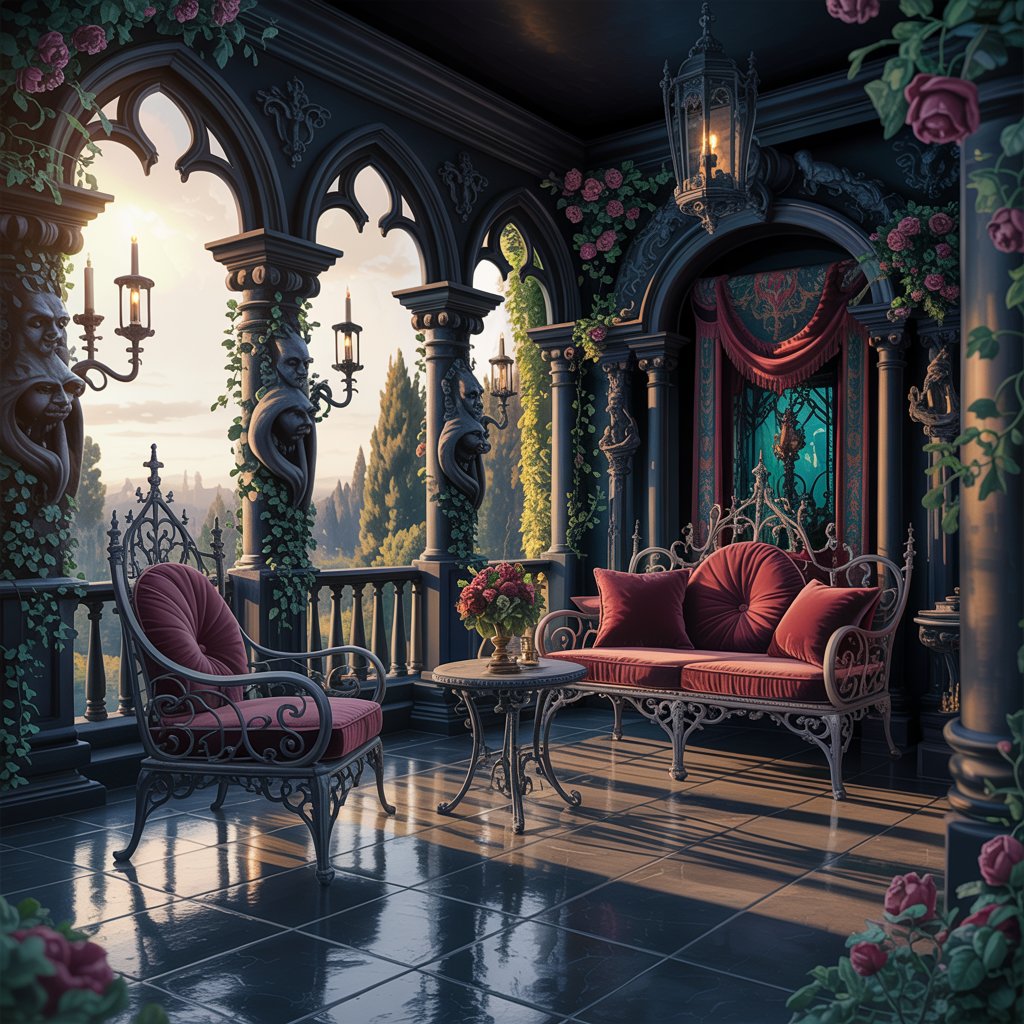
This comprehensive guide delivers 15 actionable ideas to infuse your living space with gothic elegance. Whether you’re renting a small apartment in Portland or own a spacious home, these versatile approaches work across various budgets and space constraints. We’ll explore everything from color theory to furniture selection, ensuring your transformation feels authentic rather than costumey.
1. Master the Dark Color Palette
A gothic home thrives on depth and mystery, making dark color schemes essential for authentic ambiance. Deep burgundies, charcoal grays, and obsidian blacks create the foundation for a sophisticated gothic atmosphere that feels warm rather than oppressive. These colors work particularly well in living rooms and bedrooms where mood-setting is paramount.
The key is layering similar tones to avoid flatness—think charcoal walls with black trim and plum accents. For renters, removable wallpaper with gothic patterns offers temporary transformation without commitment. Strategic lighting becomes crucial when working with dark palettes to prevent spaces from feeling cave-like.
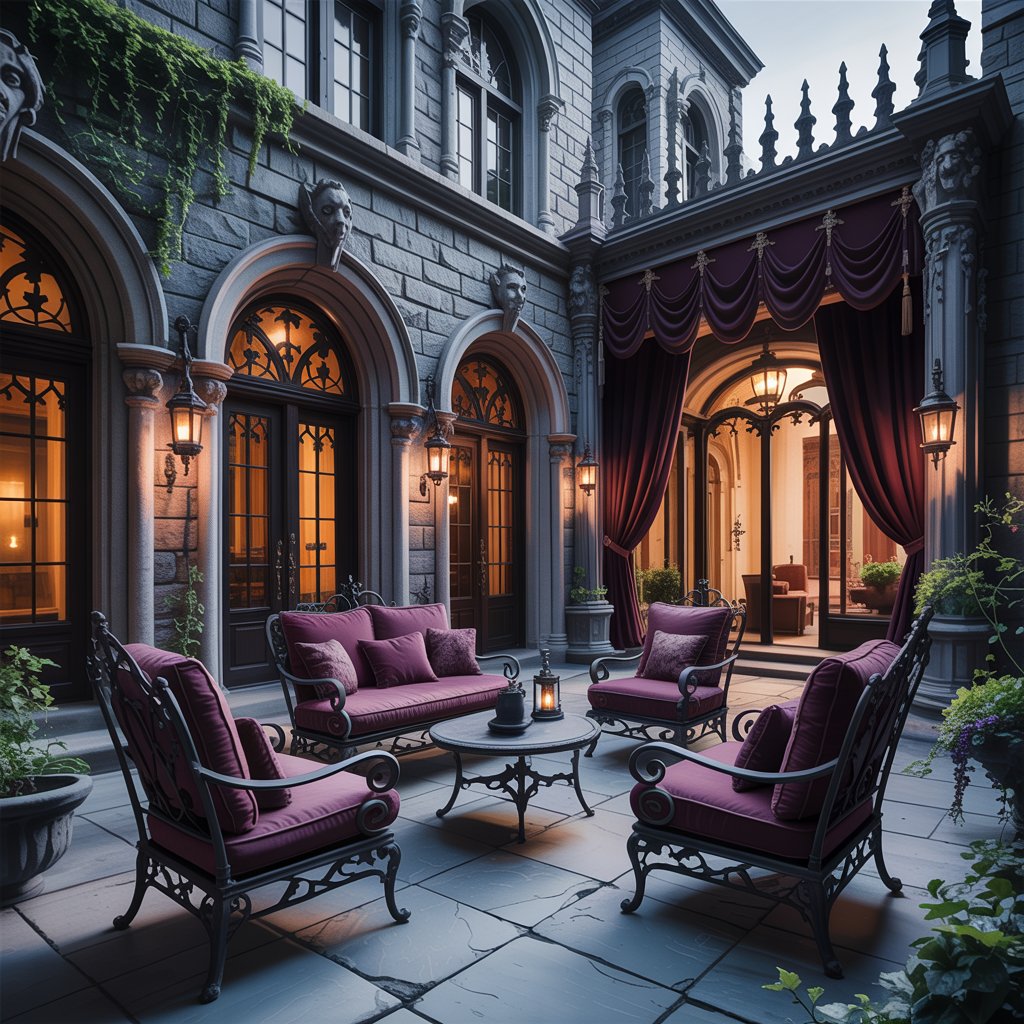
Pro Tip: Create visual interest by using matte finishes for walls and glossy finishes for trim. This contrast adds dimension while maintaining the dark aesthetic.
2. Incorporate Stained Glass Elements
Stained glass instantly elevates any space with its dramatic light play and historical significance. Modern interpretations include window films that mimic stained glass patterns without the expense of traditional installations. These elements work beautifully in entryways and dining rooms where light can interact with the colors throughout the day.
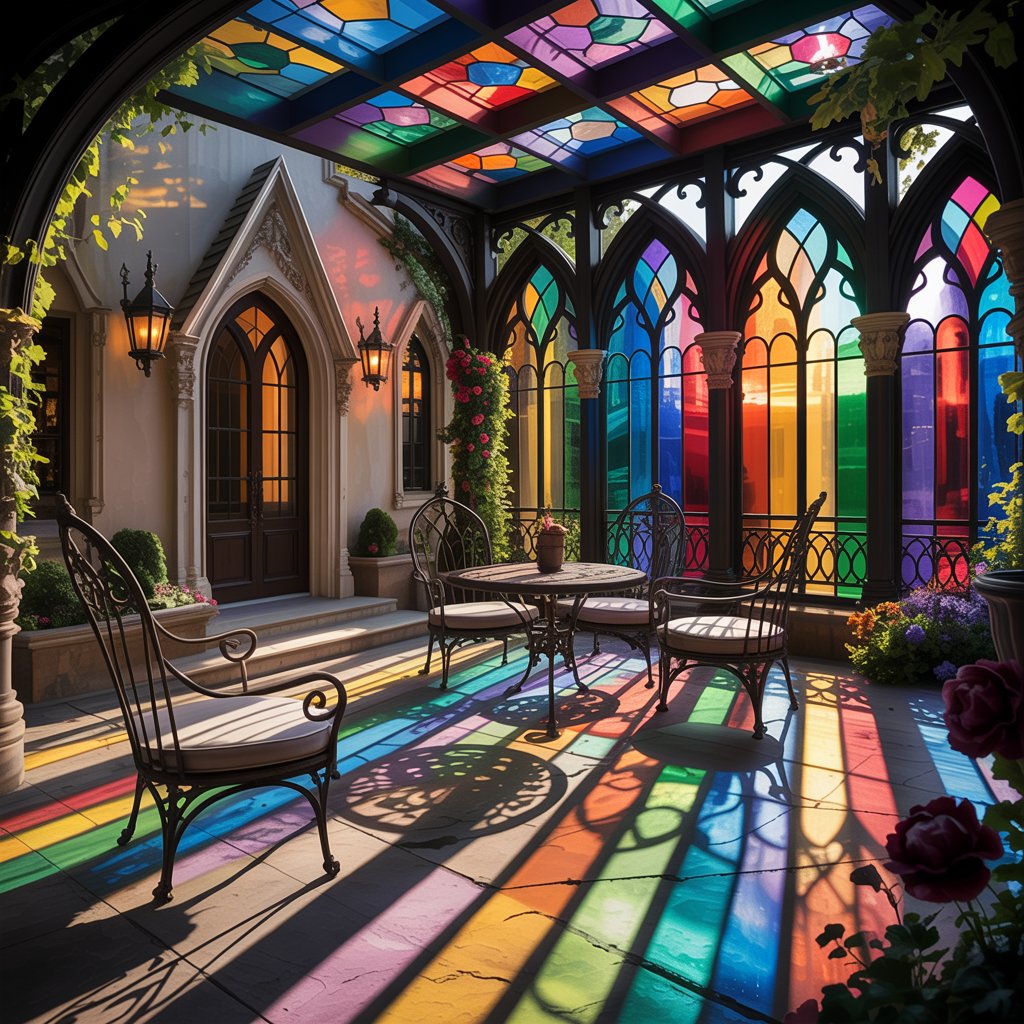
The interplay of colored light creates moving patterns that change with the sun’s position, adding dynamic visual interest. For apartments without permanent windows, stained glass panels can be mounted on walls or used as room dividers.
| Type | Cost | Installation | Best For |
|---|---|---|---|
| Traditional Stained Glass | High | Permanent | Historic Homes |
| Stained Glass Film | Low | Temporary | Renters |
| Stained Glass Lamps | Medium | Portable | Any Space |
3. Utilize Velvet Textiles
Velvet’s luxurious texture and deep color retention make it perfect for gothic interiors. Upholster dining chairs in deep emerald or burgundy velvet to create an instant focal point. These fabrics absorb light rather than reflect it, enhancing the moody atmosphere central to gothic design.
Throw pillows in crushed velvet add texture and depth to existing furniture without a full commitment. For those on a budget, velvet curtain panels create dramatic window treatments that transform the room’s entire ambiance.
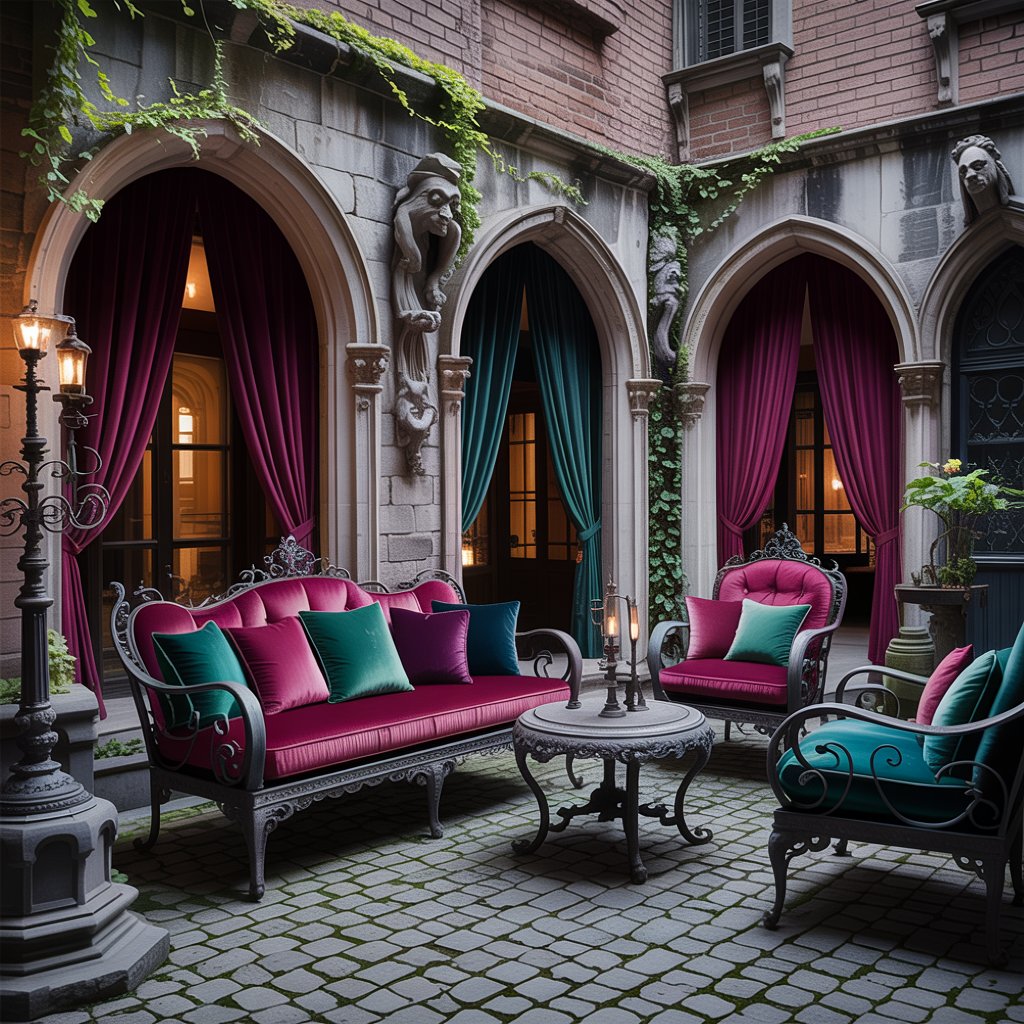
Pro Tip: Mix velvet with other textures like leather and wrought iron to avoid overwhelming the space with too much softness.
4. Add Gothic Architecture Details
Architectural elements like pointed arches, ribbed vaults, and flying buttresses define traditional gothic design. While these may be impractical for modern homes, you can incorporate smaller details like arched doorways or window frames. For renters, removable arch molding creates the illusion of architectural detail without permanent changes.
These elements connect your space to the historical roots of gothic design while adding visual interest. When properly implemented, they create the illusion of height and grandeur even in modestly sized rooms.

“Gothic home décor evokes an experience that transports you into a world filled with grandeur, mystery, and sophistication.” tiaracle.com
5. Feature Wrought Iron Accents
Wrought iron furniture and fixtures add the perfect touch of medieval authenticity to any space. Look for bed frames, chandeliers, and even table bases with intricate ironwork. These pieces serve as statement elements that immediately signal gothic influence.

For smaller spaces, iron wall sconces or decorative mirrors with iron frames provide the same aesthetic with less visual weight. The patina that develops on iron over time enhances the aged, historical feel central to gothic design.
6. Create a Library-Inspired Study
A gothic study should feel like a space for contemplation and discovery. Dark wood bookcases filled with leather-bound books create the perfect backdrop. Add a heavy wooden desk with intricate carvings and a brass desk lamp for functional elegance.

This space works well in both large homes and compact apartments—consider converting a closet into a mini-library nook. The key is creating a sense of accumulated wisdom and history through carefully curated objects.
7. Install Dramatic Lighting
Lighting is the soul of gothic design—candelabras, chandeliers, and wall sconces create pools of light in an otherwise dark space. For modern interpretations, consider lighting with black metal fixtures that provide both function and drama. Avoid overhead lighting in favor of multiple light sources that create shadow and depth.
Candles in black holders add warmth and authenticity, especially when placed on ornate candelabras. For safety-conscious renters, flameless LED candles provide the same ambiance without fire risk.

Pro Tip: Position lights lower in the room—table lamps and floor lamps create more intimate, gothic-appropriate lighting than ceiling fixtures.
8. Incorporate Religious Iconography
Religious symbols from the gothic period add historical authenticity when used thoughtfully. Stained glass religious scenes, iron crosses, or even vintage religious art prints work well in gothic interiors. These elements should be used respectfully as part of the historical aesthetic rather than for religious purposes.

Consider framing antique religious text pages or using religious symbols in subtle patterns on textiles. The key is maintaining the historical reference without creating an overwhelming religious atmosphere.
9. Use Gothic Patterned Rugs
A patterned rug can anchor a gothic space while adding visual interest. Look for Persian-style rugs with intricate patterns in deep reds, blues, and blacks. These add texture and warmth to stone or wood floors while defining living spaces.

For smaller budgets, consider rugs with gothic-inspired patterns like fleur-de-lis or intricate geometric designs. The rug should complement rather than compete with other elements in the room.
10. Feature Stone and Tile Accents
Stone walls or tile backsplashes instantly add gothic authenticity to any space. For renters, stone-look peel-and-stick tiles or faux stone panels offer temporary solutions. These textures connect to the architectural roots of gothic design while adding visual interest.
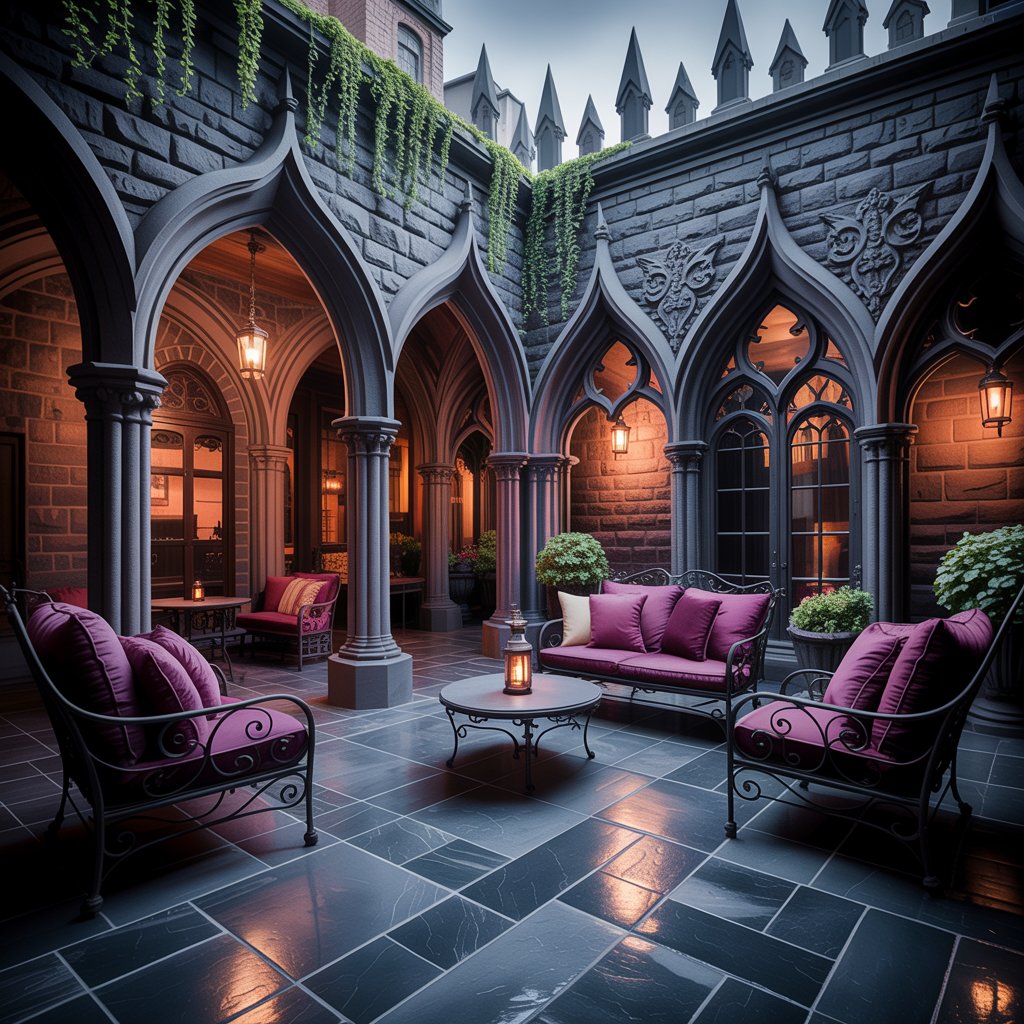
In bathrooms and kitchens, gothic-inspired tile patterns with pointed arch motifs create dramatic focal points. The coolness of stone also provides a textural contrast to warmer elements like velvet and wood.
11. Add Candles and Candelabras
Candles are essential for creating authentic gothic ambiance. Black candles in ornate holders, candelabras on dining tables, and candle walls in entryways all contribute to the mood. For safety, use flameless LED candles that mimic the flickering effect without fire risk.
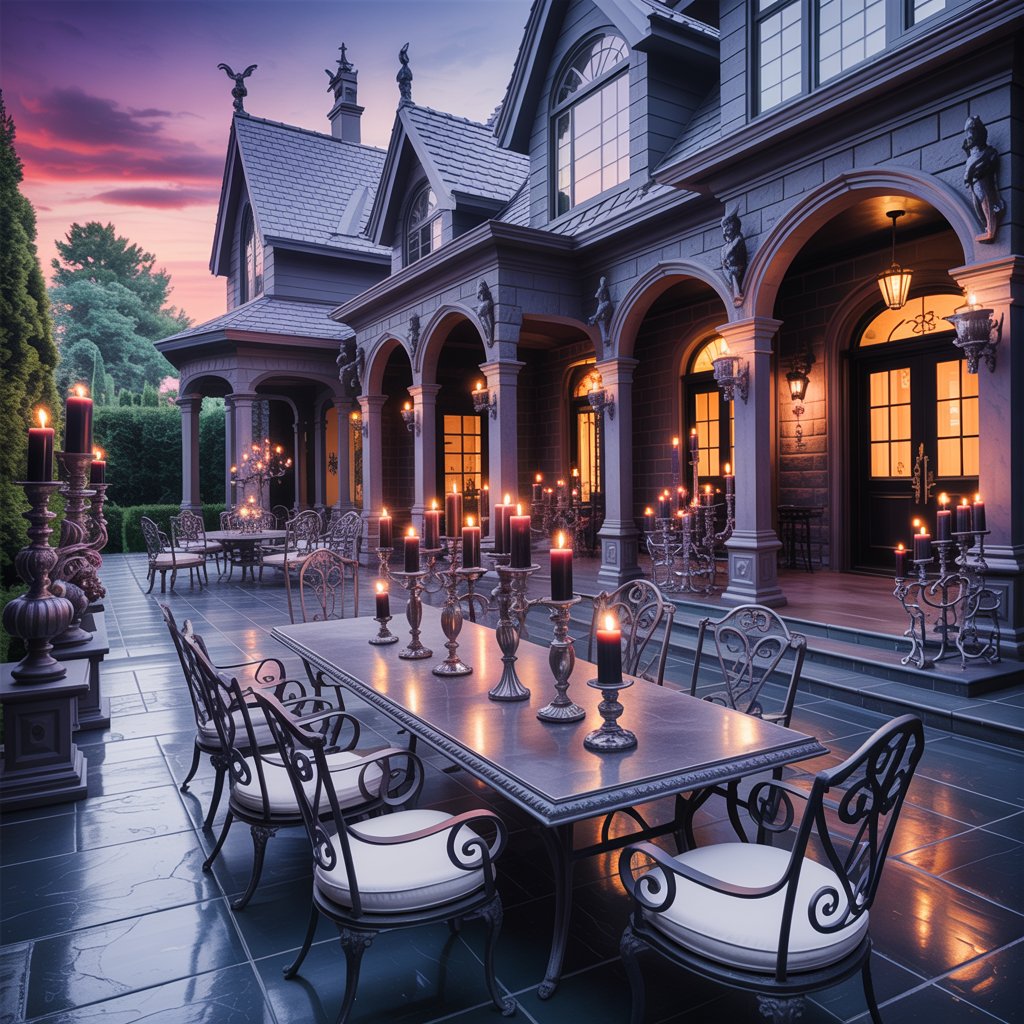
Create visual interest by varying candle heights and container styles. Grouping multiple candle holders of different sizes creates a more dynamic display than uniform arrangements.
12. Install Tall, Narrow Windows
Tall, narrow windows are hallmarks of traditional gothic architecture. For homes without these features, window treatments can create the illusion. Use floor-to-ceiling curtains with a high mount point to elongate the window visually. Add decorative trim to mimic the look of gothic tracery.
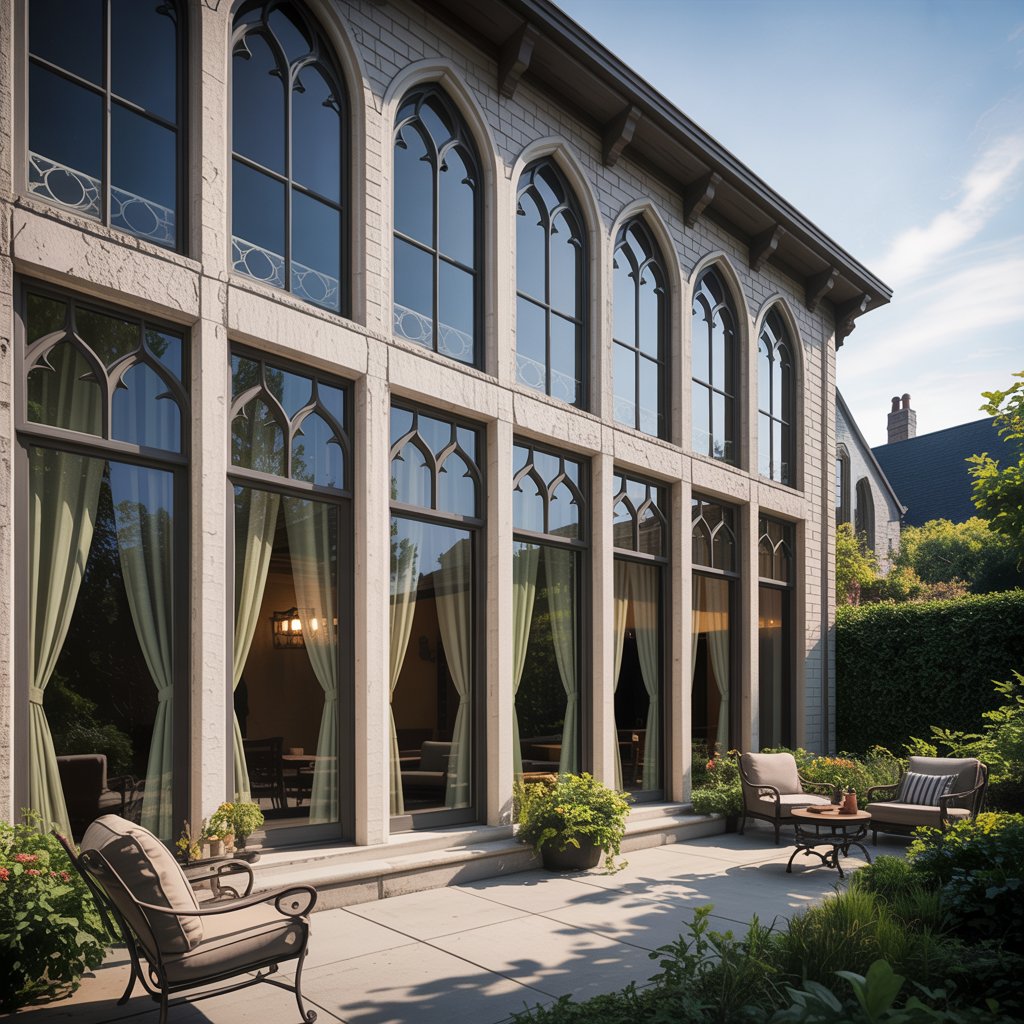
In rooms with standard windows, consider adding false muntins or using window film with gothic patterns to achieve the vertical emphasis characteristic of gothic design.
13. Feature Antique Furniture Pieces
Antique furniture with carved details, dark finishes, and ornate hardware brings instant authenticity. Look for pieces with cabriole legs, intricate inlays, and carved floral motifs. These can be found at antique stores, estate sales, or even repurposed from family heirlooms.
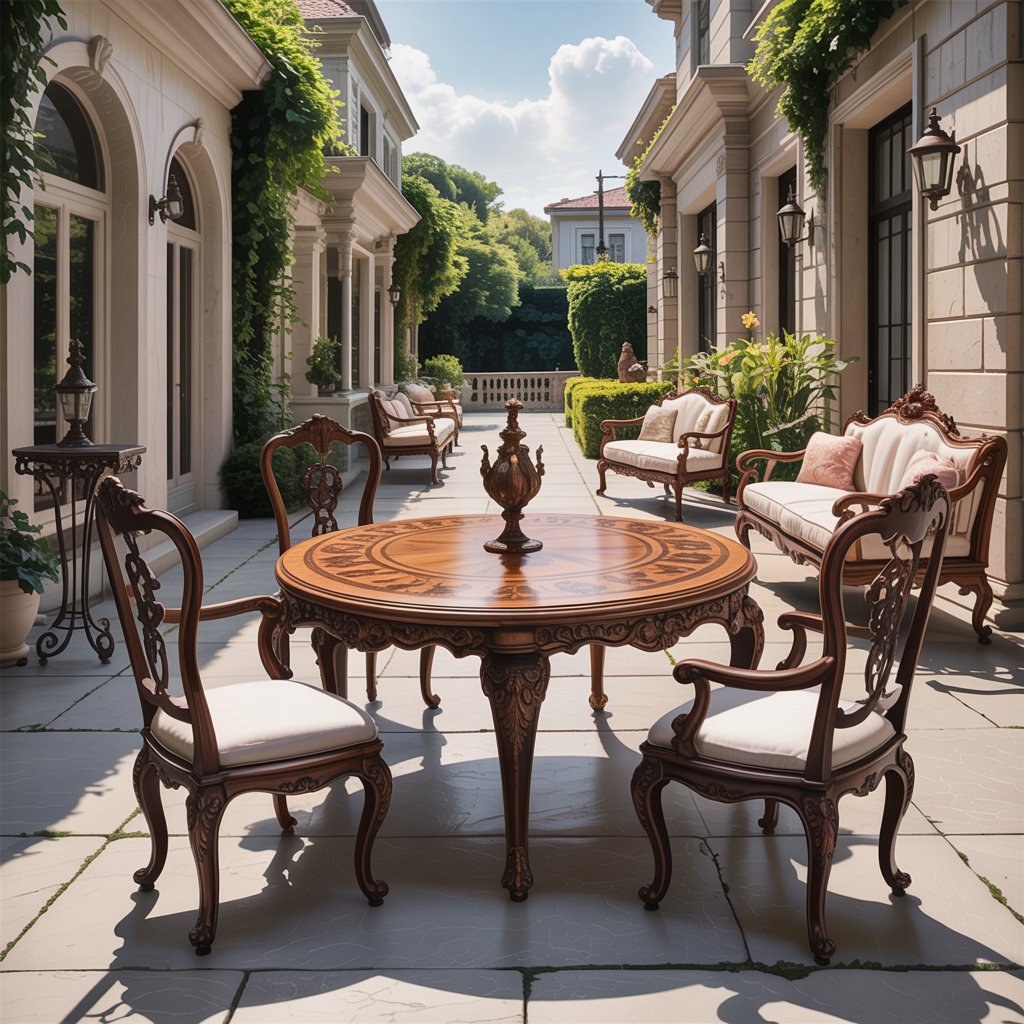
When building a collection, focus on quality over quantity—just one or two statement pieces can transform a room. Pair antique furniture with modern elements to prevent the space from feeling like a museum.
14. Create a Moody Bedroom Retreat
The bedroom should be the ultimate gothic sanctuary—dark walls, luxurious bedding, and layered lighting create a restful yet dramatic space. A canopy bed with heavy drapes adds the perfect focal point while providing privacy and ambiance.
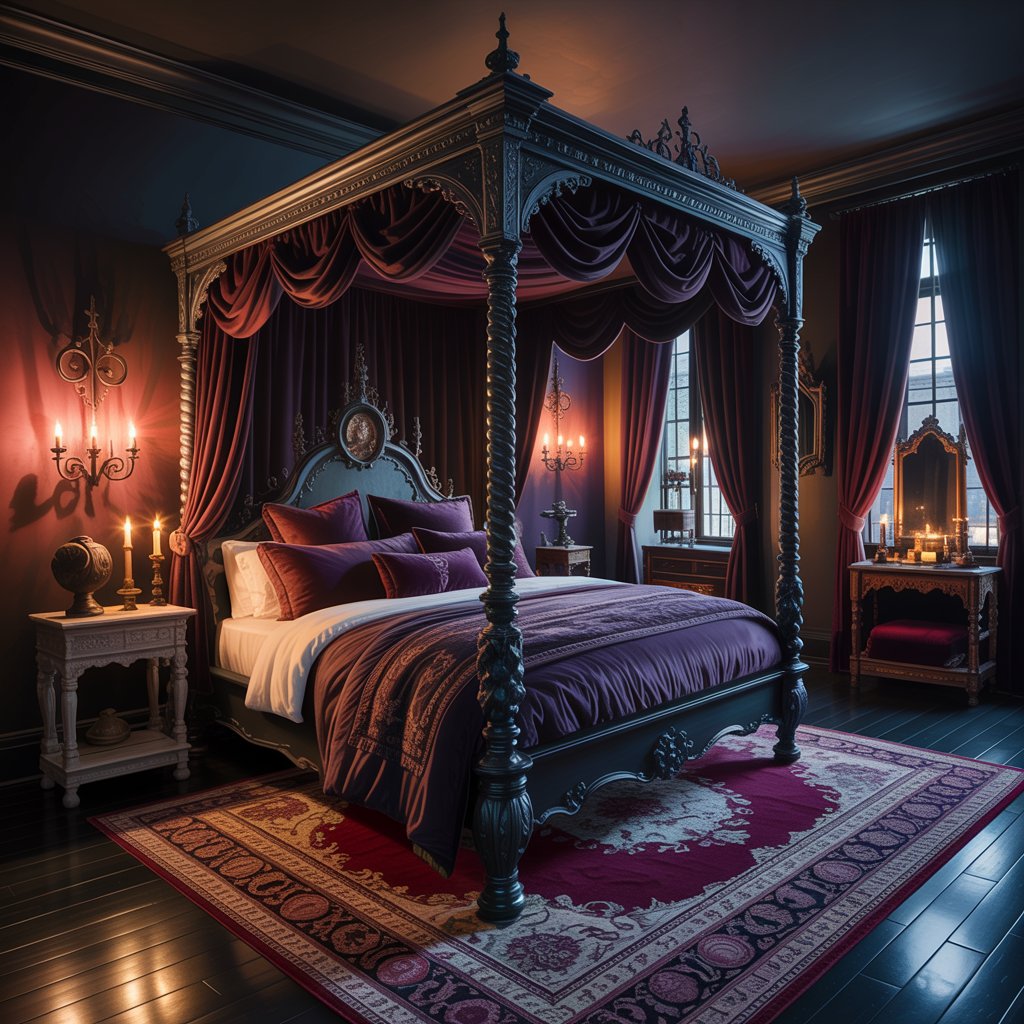
Use blackout curtains to control light and enhance the dark aesthetic during the day. For renters, consider bed canopies that attach to the ceiling without permanent fixtures.
15. Incorporate Nature-Inspired Motifs
Gothic design draws heavily from nature with motifs like leaves, vines, and flowers. Use these in subtle ways through wallpaper patterns, textile prints, or decorative objects. The key is maintaining the dark aesthetic while adding organic elements.
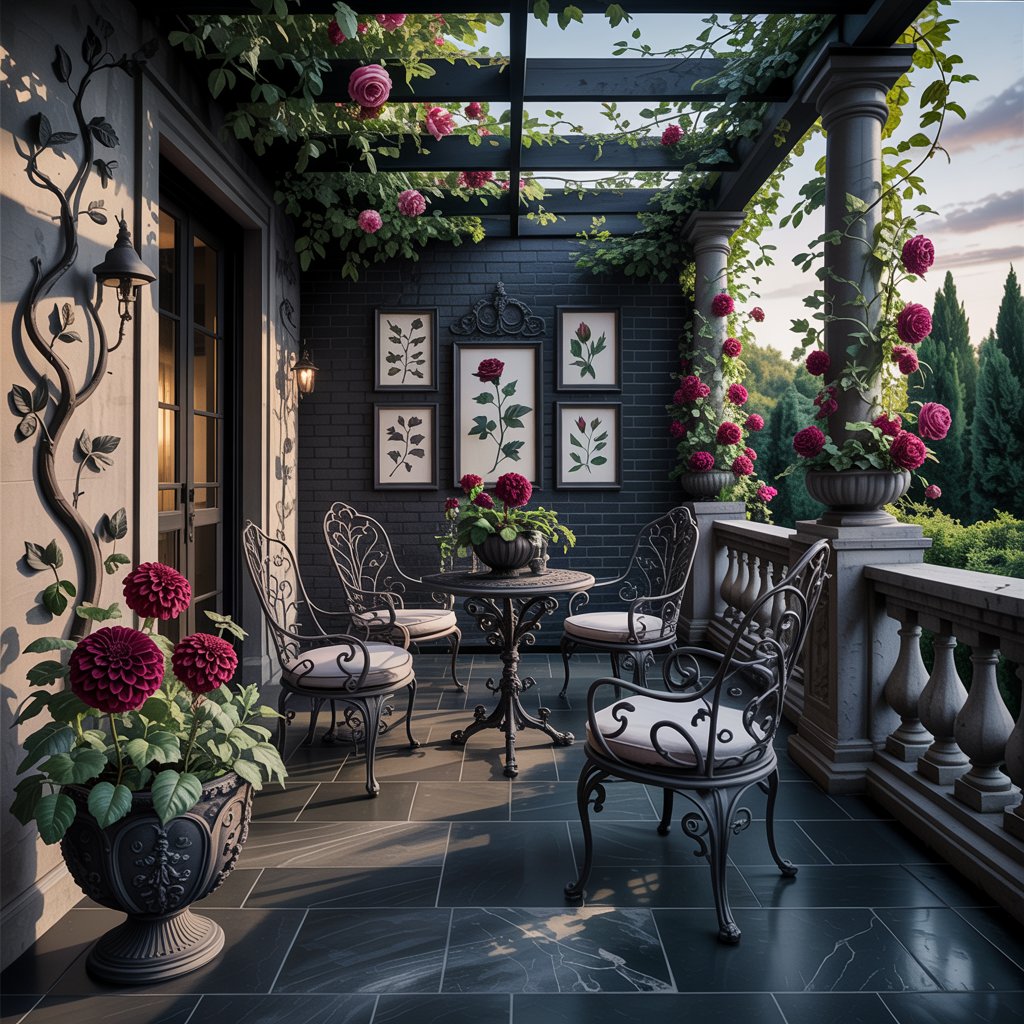
Consider iron wall art with nature motifs or botanical prints in dark frames. These elements connect to the gothic tradition of incorporating nature into architectural details while keeping the overall mood dark and mysterious.
Essential Gothic Color Combinations
| Primary Color | Secondary Color | Accent Color | Best Application |
|---|---|---|---|
| Black | Deep Burgundy | Gold | Living Room Walls |
| Charcoal | Forest Green | Copper | Bedroom |
| Navy | Plum | Silver | Home Office |
| Dark Gray | Mustard Yellow | Black | Dining Room |
Pro Tips for Gothic Success
- Balance is key: Too many dark elements can make a space feel oppressive. Add metallic accents and textured surfaces to create visual interest.
- Lighting strategy: Use multiple light sources at different heights to create depth and prevent the space from feeling flat.
- Renter-friendly options: Removable wallpaper, window films, and portable lighting allow you to create gothic ambiance without permanent changes.
- Quality over quantity: A few well-chosen statement pieces make more impact than filling a room with gothic-themed items.
Final Thoughts
Gothic home decor offers a sophisticated alternative to mainstream design trends, allowing you to create spaces that feel both timeless and uniquely personal. As homedecorfull.com notes, this style is “synonymous with drama, romance, and a touch of the macabre” – perfect for those seeking depth in their living environments.
The beauty of modern gothic design is its adaptability. Whether you’re drawn to the historical elements or the contemporary dark aesthetic movement, these 15 ideas provide a roadmap to creating a space that reflects your personal style while honoring the tradition. Remember that gothic design is about creating atmosphere and mood, not simply collecting themed objects.
Start with one or two elements that resonate most with you, then build gradually. A dark accent wall here, a velvet throw pillow there—these small changes can transform your space without overwhelming your budget or commitment level. The ultimate gothic home tells a story through its carefully curated elements, inviting both residents and guests to step into a world of sophisticated mystery.
As you embark on your gothic design journey, remember that authenticity comes from personal connection to the style, not strict adherence to historical accuracy. Whether you’re a fan of Dracula or simply appreciate the elegance of dark aesthetics, these ideas will help you craft a space that’s both haunting and welcoming—a true gothic haven in the heart of modern America.
